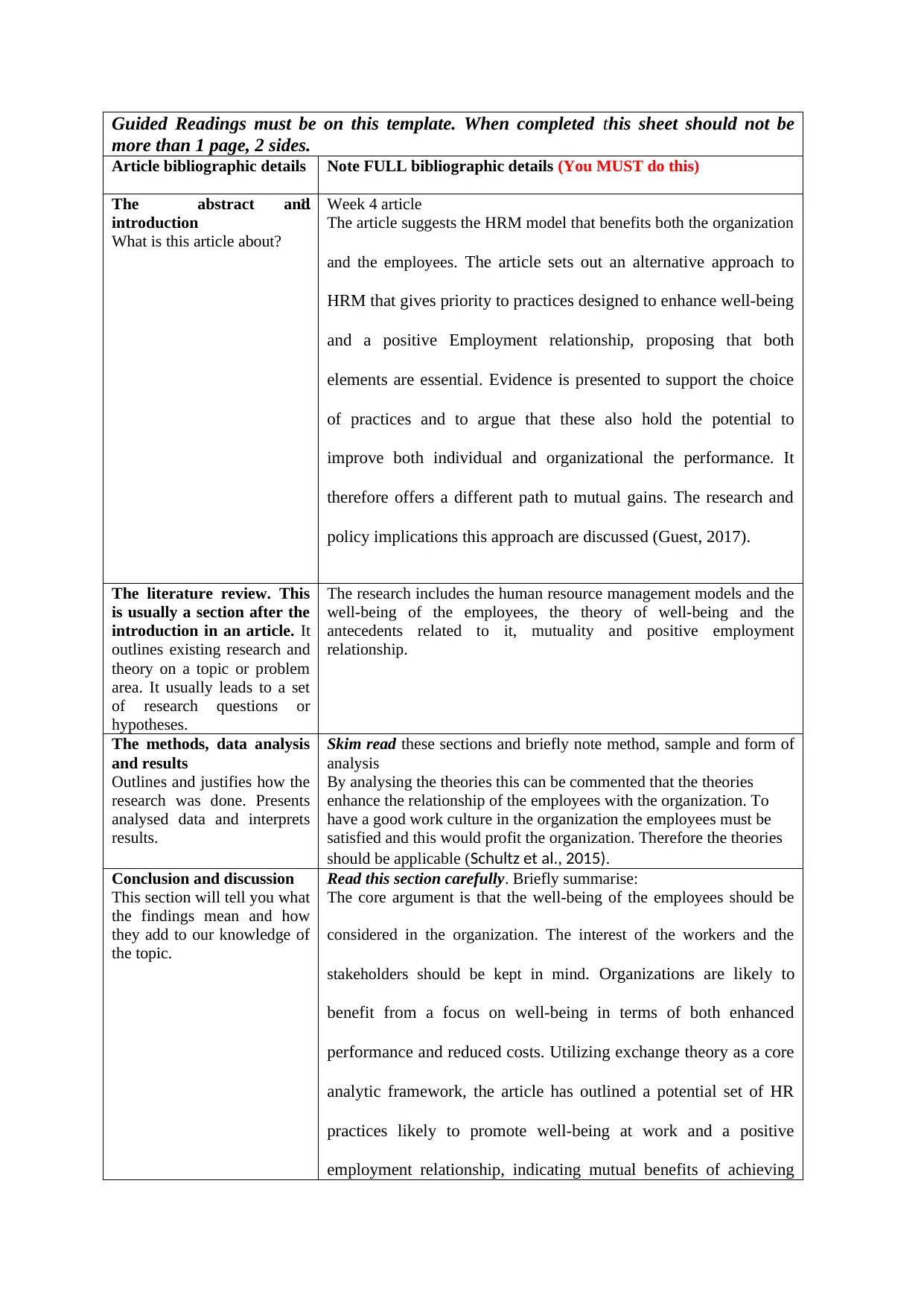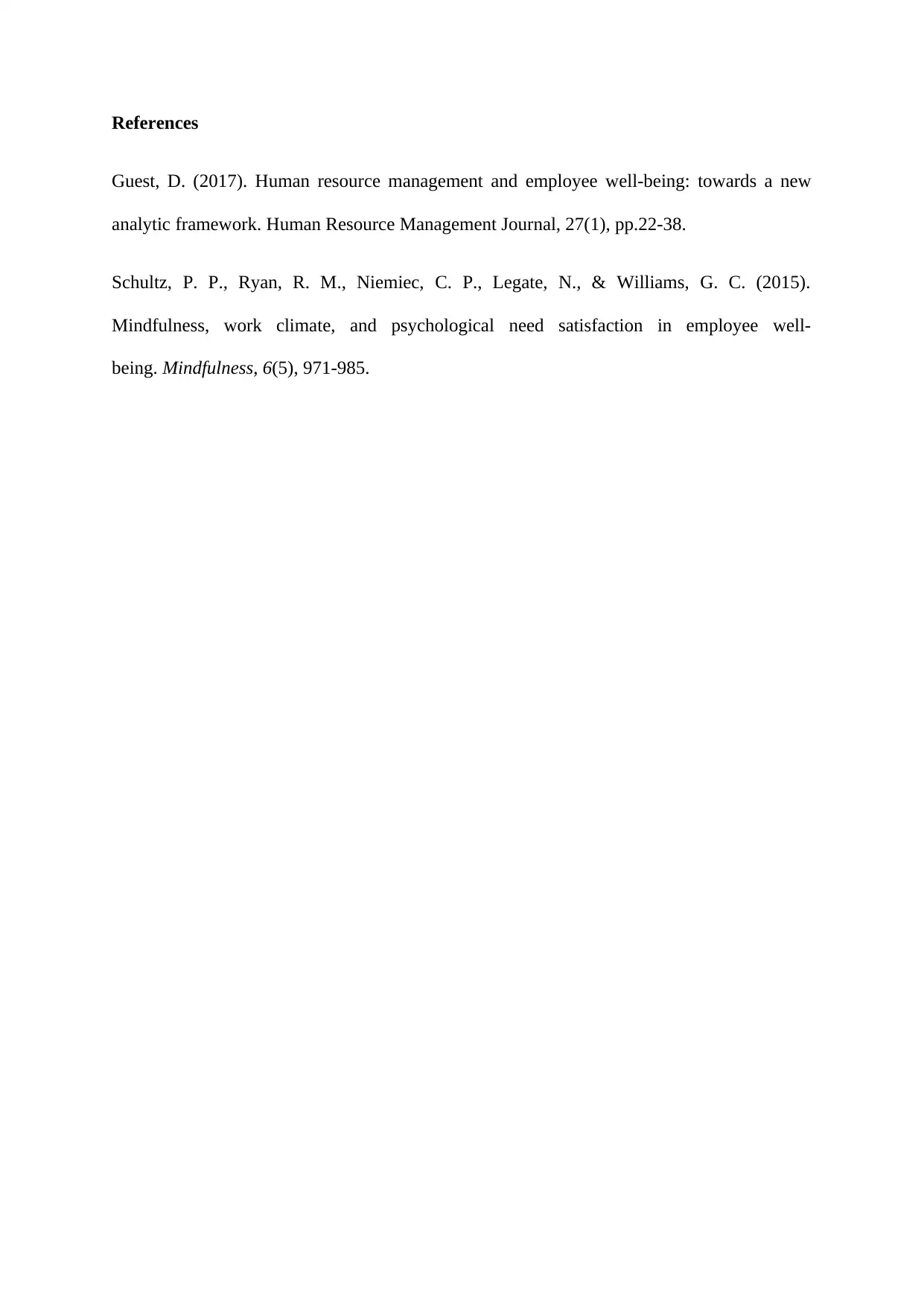HRM Practices and Employee Well-being: A Research Summary Report
VerifiedAdded on 2021/04/21
|3
|524
|41
Report
AI Summary
The assignment is a report summarizing two research papers. The first paper, by Guest (2017), focuses on the relationship between human resource management (HRM) and employee well-being, proposing a framework that prioritizes practices designed to enhance well-being and a positive employment relationship. The article emphasizes the mutual benefits of this approach, suggesting that organizations can improve performance and reduce costs by focusing on employee well-being. The second paper, by Schultz et al. (2015), explores the impact of mindfulness, work climate, and psychological need satisfaction on employee well-being. The report summarizes the core arguments, methodologies, and findings of these studies, highlighting the importance of employee well-being for both individual and organizational success. The report also references the use of exchange theory as a core analytic framework for understanding the impact of HRM practices.
1 out of 3










![[object Object]](/_next/static/media/star-bottom.7253800d.svg)